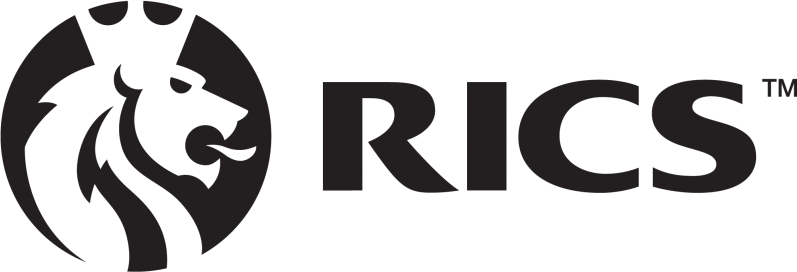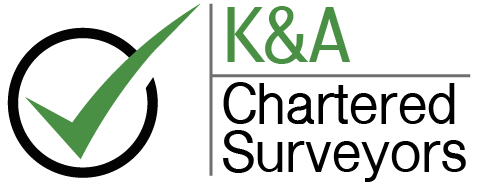When roof concerns emerge, drone roof inspection offers a rapid, secure, and precise diagnosis, diminishing the hazards associated with other roof inspection methods. By deploying drones, commercial and domestic property owners gain access to high-definition imagery that reveals critical details from an aerial perspective. This guide will explore the essentials of drone roof surveys, the practical and financial benefits, and how these high-tech solutions are reshaping property assessments.
Key Takeaways
- Drone roof inspections enhance safety and efficiency, providing detailed high-resolution imagery and rapid survey completion while reducing the need for physical access to hazardous roofing areas.
- Utilising drones for roof surveys is cost-effective. It offers significant savings on labour and equipment while delivering thorough inspections that can prevent costly long-term repairs through early detection of minor issues.
- Choosing the right drone roof inspection service requires attention to legal compliance and operator qualification, evaluation of the drones’ technical capabilities, and understanding the provider’s experience and quality of work.
Elevating Roof Inspections: The Drone Advantage
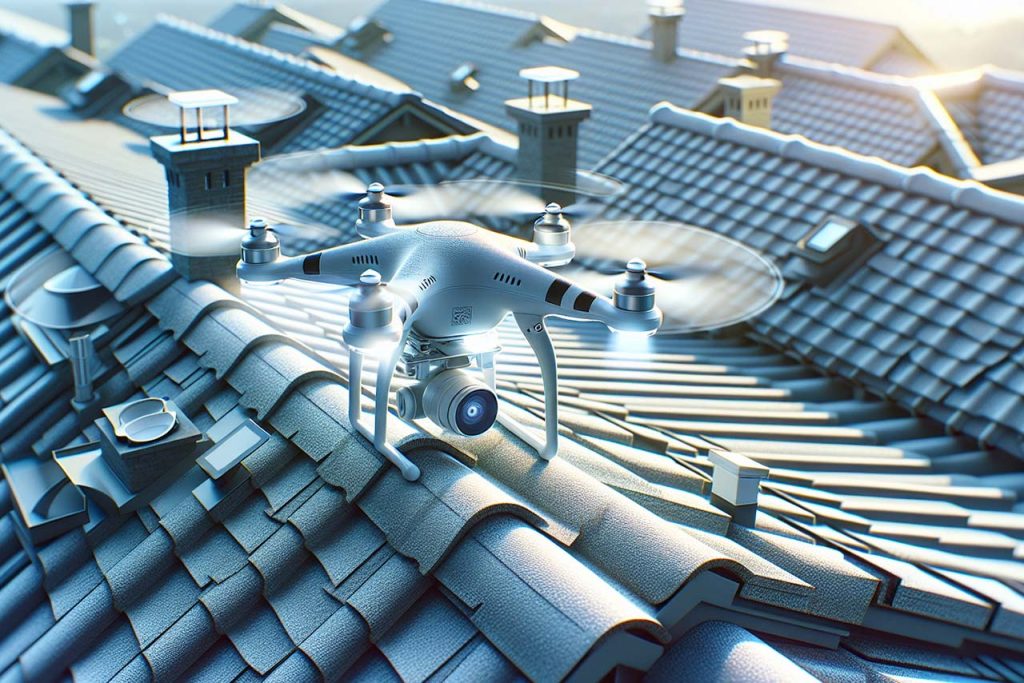
As drones continue to soar in popularity, their application in the realm of roof inspections has proven to be a game-changer. Equipped with high-quality imaging technology, drones can thoroughly survey nearly any part of a building, enhancing safety by reducing the need for inspectors to access hazardous locations.
Upon arrival at the inspection site, drones can be deployed promptly, which speeds up the inspection process. Besides, they provide a comprehensive view for roof inspections, capturing intricate details that might be missed with conventional methods.
Safety First: Minimizing Risk with UAVs
Drone roof surveys outshine manual inspection methods in one key area: safety enhancement. Using drones mitigates the risk of personal injury by eliminating the need for workers to physically climb onto roofs. They considerably lower the risk associated with inspections of complex roof designs and deteriorated structures, as drones are operated remotely with no necessity for direct contact.
This ensures that potential faults with guttering or leaks in the roof can be identified safely and effectively.
Speed and Efficiency: Saving Time on Surveys
Time is a precious commodity, especially when it comes to property inspections. This is where drone roof surveys shine. With the ability to complete inspections in under 30 minutes, drone surveys substantially reduce the time typically needed for roof inspections. The benefits of drone-based inspections include:
- Immediate commencement and rapid completion of the survey process, as there is no need for climbing equipment setup
- Increased efficiency and productivity, as inspections can be completed quickly and without delays
- Enhanced safety, as inspectors do not need to physically climb onto roofs, reducing the risk of accidents and injuries
By utilizing aerial drone survey technology for drone roof surveys, you can save time and resources while ensuring thorough and accurate inspections.
Furthermore, drone inspections facilitate rapid data transmission to ground teams or directly into the Cloud, expediting analysis and report generation. Thus, drone surveys are particularly well-suited for time-sensitive inspections.
Clarity from Above: High-Quality Imagery and Video
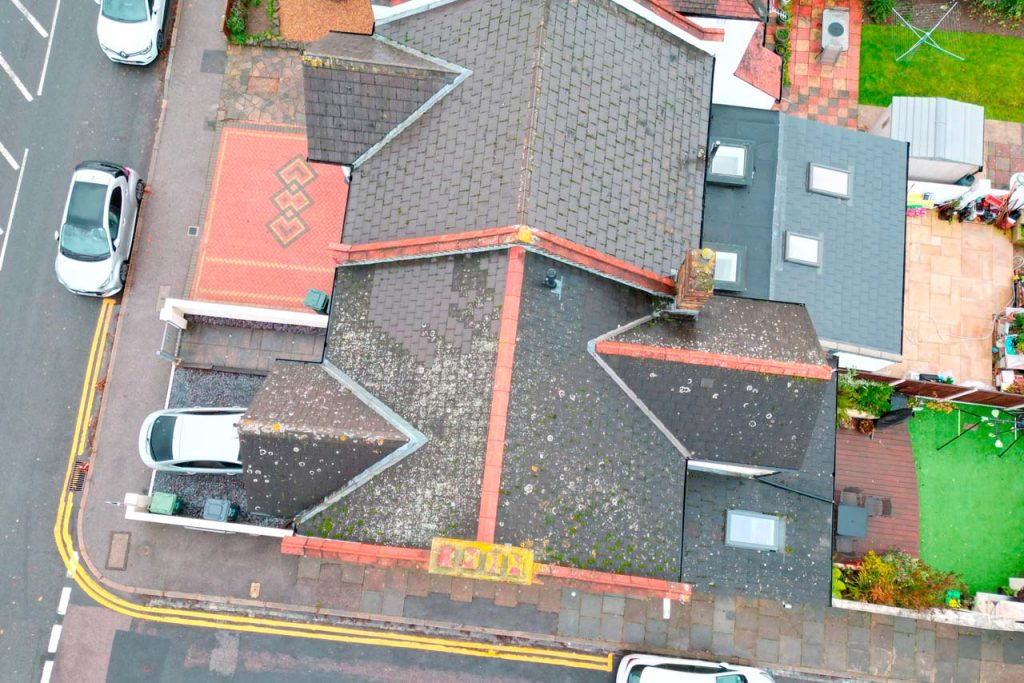
Drones are not merely powerful due to their flight capabilities; the quality of images they capture is equally remarkable. Drones used for roof inspections are equipped with high-resolution cameras, some of which are capable of capturing 4K/48Mp imagery and ultra-high-definition 4K video. These detailed views cover various roof elements, highlighting flaws such as damage in chimneys and gutters, penetrations, flashings, valleys, and other critical areas.
Therefore, the clarity and detail of the imagery and videos obtained from drone inspections provide property owners with conclusive evidence of the state of their roofs.
Cost-Effectiveness of Drone Roof Surveys
Despite the numerous benefits of drone roof inspections, cost-effectiveness remains a top attraction for property owners. Using drones for roof surveys provides a cost-effective solution owing to reduced labour and equipment costs compared to traditional methods. The drone roof inspection cost varies based on factors such as the size and complexity of the roof and desired deliverables, with an average-sized property starting at around £200. To get a better understanding of the expenses involved, it’s essential to consider the drone roof survey cost as well.
Drone roof surveys not only offer detailed inspections at a lower cost but also deliver results promptly, making them a financially advantageous option over manual inspection techniques.
Survey Cost Savings: Drone vs. Manual Methods
In comparison to manual methods, drone inspections can notably reduce costs by:
- Doing away with the expensive scaffolding, lifts, and large inspection teams
- Not requiring equipment like scaffolding and cherry pickers, which have substantial costs associated with them
- Typically requiring smaller teams, which contributes to labour cost savings
Additionally, the additional insurance costs that are necessary for manual roof surveys due to the use of climbing gear are avoided with drone inspections.
Long-Term Financial Benefits
Apart from immediate cost savings, the regular use of drones for inspections offers several benefits:
- Identifying minor issues before they develop into significant problems, thereby preventing costly repairs
- Generating comprehensive reports from drone inspection data and imagery that outline the roof’s condition
- Guiding property owners on necessary maintenance or repairs
Ultimately, this proactive approach can save property owners significant money in the long run.
Understanding Drone Roof Inspection Services
A drone roof inspection involves surveying a building’s roof using a drone or an unmanned aerial vehicle (UAV) to pinpoint potential roofing issues. Professional drone operators, like K&A Chartered Surveyors, offer various inspection services, including aerial inspection with basic imagery and full condition reports prepared by RICS Chartered Surveyors.
What to Expect During a Drone Inspection
What does a drone roof inspection entail? A licensed drone pilot conducts the following steps:
- Pre-flight checks, ensuring the UAV is ready for the task
- Evaluate the drone’s battery life and range to cover the entire roof without interruption
- Uses mapping software to plan the drone’s flight path for complete coverage of the area, adhering to regulatory compliance for airspace
- Utilizes the drone’s ability to follow a pre-determined path with automated flight features to ensure consistent results.
During the inspection, high-resolution images and videos are captured.
Service Inclusions: From Images to Analysis
Drone inspection services may provide flexibility in service delivery, offering clients high-resolution photographs and an optional detailed report on roof condition at an additional cost. A comprehensive drone roof inspection report typically includes an executive summary, introduction, methodology, roof overview, detailed observations and findings, a severity assessment of defects and issues, recommendations, safety considerations, and additional supporting documentation.
It’s crucial to assess the compatibility of the drones with various software platforms used in roof inspections to ensure effective and efficient service.
When to Opt for a Drone Roof Survey
Identifying the appropriate time for a drone roof survey can have a significant impact. These surveys are particularly useful after severe weather events which could have damaged the roof.
After events with high winds or hail, a drone roof survey can help assess potential damage and support any related insurance claims.
Identifying the Right Moment for Inspection
Annual drone roof surveys are indispensable for efficiently monitoring changes and keeping a detailed record of a property’s exterior condition. As a roof ages, inspections should become a routine aspect of maintenance to identify and manage natural wear and tear before issues become more serious.
In particular, after events like severe storms, a comprehensive drone roof inspection is crucial to assess the overall condition, pinpoint any damages incurred, and receive guidance on necessary maintenance.
Evaluating Your Roof’s Needs
When it comes to evaluating your roof’s needs, visible signs like:
- damaged shingles
- leaks
- gutters in disrepair
- mildew presence
can indicate the necessity for an in-depth drone roof evaluation. A comprehensive drone survey is advantageous for large, intricate roofs or when reassurance is needed about possible concealed issues that aren’t immediately apparent.
Navigating Legalities and Regulations
In addition to technical considerations, drone operators performing commercial roof inspections must navigate the labyrinth of laws and regulations. They must comply with The Air Navigation Order 2016 and be properly trained, with some areas requiring a Part 107 certificate or an equivalent qualification.
Pilots must maintain a visual line of sight, fly below 400 feet, and secure operational authorisation, especially for flights in higher-risk or congested areas.
Airspace Restrictions and Permissions
Drone roof inspections require adherence to airspace restrictions, often entailing coordination with multiple airspace authorities. Prior to conducting a drone roof inspection, operators must ensure they have the necessary permissions for the intended airspace, such as checking for any Temporary Flight Restrictions (TFRs).
For operations that go beyond hobbyist or baseline commercial activities, pilots must operate under a specific category, which imposes more complex airspace restrictions.
Ensuring Compliance with Drone Laws
Compliance with drone laws is paramount. Drone pilots for roof surveys must be licensed by the Civil Aviation Authority and possess a Remote Pilot Competency Certificate (RPCC). The RPCC demonstrates that the pilot has the necessary knowledge and skills to operate a drone safely and legally. It is an important credential for drone operators.
All drone operations must comply with the CAA Operational Manual, ensuring that activities are managed safely to minimize risks.
Addressing Weather Concerns in Drone Inspections
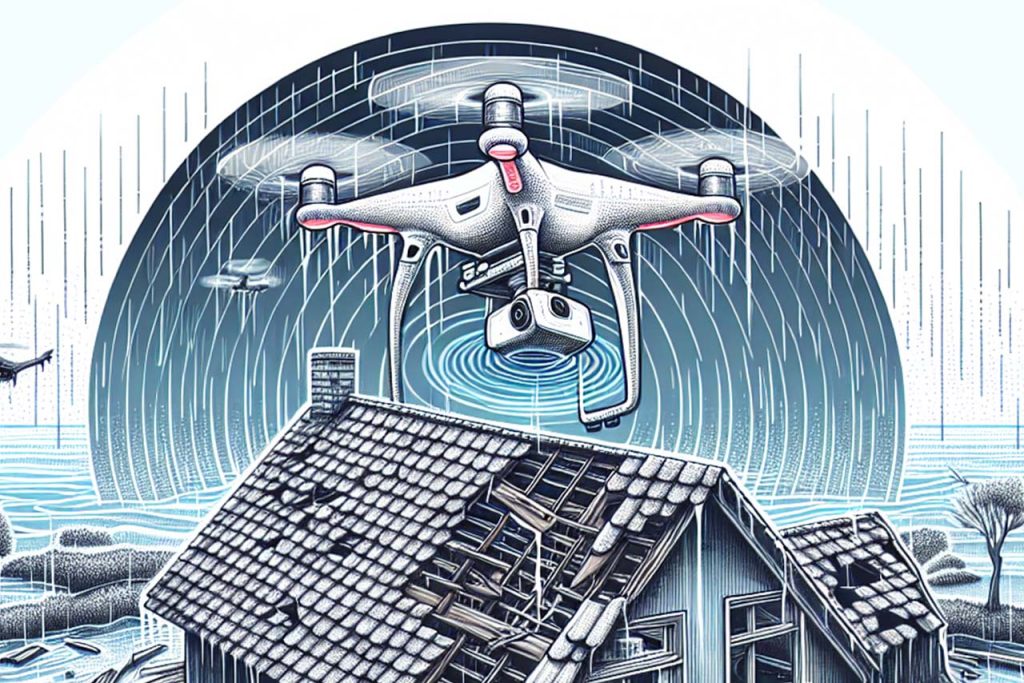
Despite the many advantages drones bring to roof inspections, they are susceptible to weather changes. Weather conditions such as:
- wind
- precipitation
- temperature
- visibility
Weather conditions can significantly impact drone roof inspections, especially when assessing a flat roof.
Adverse weather, particularly strong winds or rain, can restrict drone usage and postpone data gathering.
Planning for Clear Skies
Ideal weather conditions can significantly improve the efficiency and success rate of drone roof surveys. Drone pilots must consider the following clear weather conditions for optimal roof inspections:
- No rain or snow
- Minimal wind
- Good visibility
- Adequate lighting
Adverse weather can hinder the accuracy and safety of aerial surveys.
Drone operators must conduct pre-flight weather assessments, verifying forecasts, wind conditions, and atmospheric changes to plan for ideal flying conditions.
Mitigating Weather-Related Challenges
While it’s ideal to have clear skies for drone inspections, drone operators must also be prepared to handle weather-related challenges. Drone pilots need to recognize their drone’s wind limitations, typically around 15mph, and understand local wind patterns and terrain effects on wind behavior to ensure flight stability during roof inspections.
During flights, drone operatives must avoid precipitation and land the drone immediately if unexpected rain or snow occurs to prevent moisture damage to the equipment.
The Technological Edge in Drone Roof Inspections
The effectiveness of drone roof inspections is largely dependent on the underlying technology. Drones equipped with:
- Infrared or thermal imaging cameras can detect leaks and heat loss in roof inspections, revealing issues not visible to the naked eye.
- RTK GPS systems, which provide precise measurements.
- AI algorithms, which process the high-resolution images for detailed analysis.
These technologies greatly enhance the accuracy of drone roof inspections.
Capturing Every Detail: Advanced Imaging Techniques
The effectiveness of drone roof inspections hinges on advanced imaging techniques. Drones with thermal imaging capabilities identify roof temperature variances caused by moisture or damage, helping to detect issues such as poor insulation and potential leaks that are not readily visible.
Advanced drone imaging technology captures detailed visuals, including high-resolution still images, video, and comprehensive data such as orthomosaic maps and 3D models, providing a more complete and accurate representation of the roof’s condition.
Precision Measurements with RTK Technology
Another feature that bolsters the accuracy and safety of drone roof inspections is RTK technology. RTK technology is utilized in some drone models to assist with the drone’s positioning, which is essential for accurate assessments and planning of repairs.
The integration of RTK technology aids in creating accurate maps and models of roofs which is fundamental for precision in measurements.
Selecting the Right Drone Roof Inspection Provider
Selecting an appropriate drone roof inspection provider is vital for guaranteeing a successful and worthwhile inspection. It’s important to examine the credentials and track record of the drone service provider, ensuring they have ample experience and are deemed reliable within the industry.
Look into the variety and scope of previous roofing projects completed by the drone provider as an indication of their expertise in the field.
Criteria for Choosing a Drone Operator
When selecting a drone operator, their expertise, equipment quality, and commitment to safety standards are crucial factors to consider. For roof inspections, drones should ideally have:
- High-resolution cameras with at least 12MP photo resolution and 1080p video resolution, although 4K is now commonly available
- Stable hovering and precision flight capabilities to take clear images, especially in windy conditions
- Gimbals to provide additional camera stabilization
These features are important for ensuring high-quality and accurate roof inspections.
Evaluating Drone Inspection Portfolios
It’s imperative to review a provider’s drone inspection service portfolios to assess their expertise and overall quality of work. Portfolios that include detailed case studies and examples offer transparency into the provider’s approach and the complexity of issues they can handle.
The quality of previous inspections showcased in the portfolio is a strong indicator of the service provider’s reliability and proficiency in conducting drone roof inspections.
Summary
In conclusion, drone roof inspections have revolutionized how we assess and maintain the health of our roofs. They provide a safer, faster, and more efficient alternative to traditional inspection methods, saving time and money while delivering high-quality results. Property owners can reap the benefits of this innovative technology by choosing the right drone inspection provider and ensuring adherence to regulations and weather considerations. So why not elevate your home’s health check with a drone roof inspection?
Frequently Asked Questions
A licensed drone pilot conducts pre-flight checks, evaluates battery life, and then follows a pre-planned flight path to capture high-resolution images and videos of the roof, ensuring full coverage.
The cost of a drone roof inspection varies based on factors such as the size and complexity of the roof and desired deliverables. On average, inspecting an average-sized property starts around £200.
Drone roof inspections provide improved safety, efficiency, and image quality, reducing the risk of injury, enabling quick data collection, and capturing high-resolution visuals.
You should opt for a drone roof survey after severe weather events or for regular annual inspections to monitor changes and maintain a detailed record of your property’s exterior condition. This will help in identifying damages and maintaining the condition of the roof.
When choosing a drone operator, consider their credentials, track record, drone quality and features, and adherence to safety and regulatory standards for the best service.
